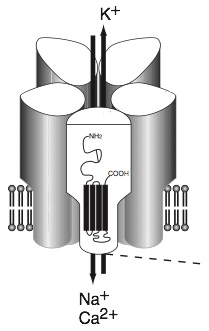 Nicotinic acetylcholine receptors (nAChRs) are conserved cholinergic transmembrane receptors that in insects nAChRs are confined to the nervous system where they mediate fast synaptic transmission. nAChRs are targets for several classes of insecticide, particularly the Neonicotinoids, which are widely used in agriculture for pest management. However, there is some concern that these insecticides also affect pollinating species such as the honey bee.
Nicotinic acetylcholine receptors (nAChRs) are conserved cholinergic transmembrane receptors that in insects nAChRs are confined to the nervous system where they mediate fast synaptic transmission. nAChRs are targets for several classes of insecticide, particularly the Neonicotinoids, which are widely used in agriculture for pest management. However, there is some concern that these insecticides also affect pollinating species such as the honey bee.
Functional nAChRs are of 5 subunits, drawn from a repertoire of 10 genes (7 alpha and 3 beta) however the subunit composition is poorly characterised in vivo and the function of different receptors classes is unknown. We have initiated a BBSRC-funded project in collaboration with Kathryn Lilly (Cambridge Centre for Proteomics) and Syngenta to use the Drosophila model to characterise receptor diversity & function. We are using a CRISPER-Cas9 genome engineering approach to generate null mutants in all 10 receptors subunit genes and also to generate endogenously tagged versions of each subunit for proteomics and functional studies